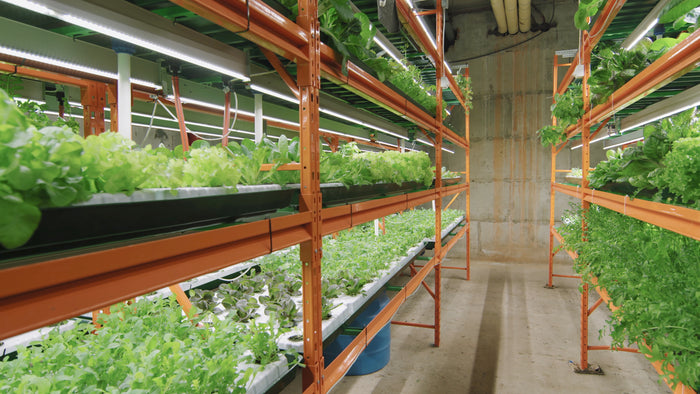Demystifying TDS, EC, and PPM for Hydroponic Growth


Hydroponics offers an efficient and controlled method of cultivating plants, and to succeed, it's essential to understand the science behind it. One of the most critical aspects of hydroponics is monitoring the nutrient content in your water solution. This is where terms like TDS, EC, and PPM come into play. In this post, we'll simplify these acronyms and explain their significance in hydroponic plant growth.
Understanding TDS, EC, and PPM
TDS stands for "Total Dissolved Solids," EC stands for "Electrical Conductivity," and PPM stands for "Parts Per Million." These terms might seem confusing, but let's break them down:- TDS (Total Dissolved Solids): TDS measures the concentration of dissolved substances in your water. It's important to note that TDS probes don't directly measure the nutrient content in water. Instead, they estimate dissolved solids by assessing the water's electrical conductivity.
- EC (Electrical Conductivity): EC and TDS are essentially two ways to express the same measurement. EC is commonly used in Europe and is typically measured in microsiemens per centimeter (μS/cm). It indicates how well the water conducts electricity. Pure water has low electrical conductivity, while nutrient-rich water has high electrical conductivity.
- PPM (Parts Per Million): PPM is the measurement used in North America and is a way of expressing TDS. It quantifies the number of parts of dissolved solids per million parts of the solution. For instance, if your PPM reading is 800, it means you have 800 milligrams of dissolved substances in a liter of the solution itself.
Conversion Methods
To put it bluntly, North America is overcomplicating EC by converting it to TDS. Though, if forced to use TDS, it's important to understand that there are several methods get your final value. It's crucial to know which conversion method your probe employs, as different methods can yield different values. The most common conversion methods include:- Sodium Chloride (NaCl) Method: This method multiplies EC by 0.5.
- 4.4.2 Method: This method multiplies EC by 0.7.
- Potassium Chloride (KCl) Method: This method multiplies EC by 0.55.
Applying TDS, EC, and PPM to Plant Growth
Different plants have varying nutrient requirements. Thicker vegetables, like bok choy, broccoli, and brussel sprouts, thrive with higher TDS values, while thinner plants, like various lettuce varieties, prefer lower TDS values. You can find most specific nutrient requirements for common plants online. Take a look at these to ensure your hydroponic setup meets the needs of your plants.
Choosing the Right Tools
To measure EC and TDS effectively, consider using a quality conductivity probe, such as the one found in the KAI Hydroponics Kit or the KAI Soil Kit. These kits use the sodium chloride (NaCl) method for converting EC to TDS, providing you with accurate readings.Conclusion
While these acronyms might seem complex at first, understanding TDS, EC, and PPM is fundamental to successful hydroponic plant growth. It allows you to tailor your nutrient solution to meet the specific needs of your crops. We hope this post has provided a clearer understanding of these concepts and their application in hydroponic gardening. Happy growing!(P.S. if you would prefer to watch a video explanation of these terms, you can click this sentence for one.)




